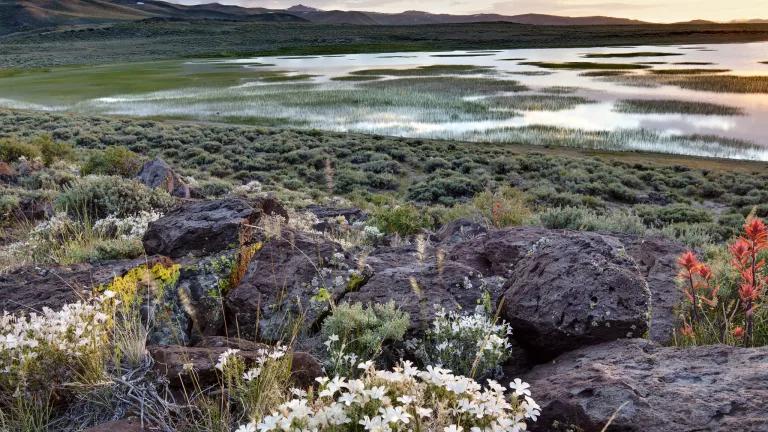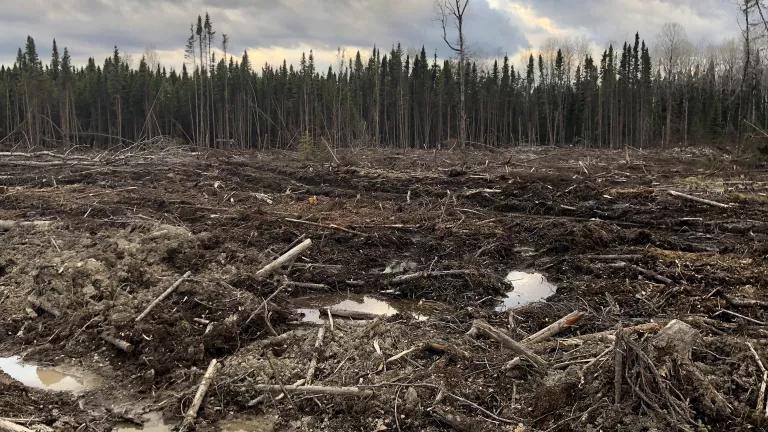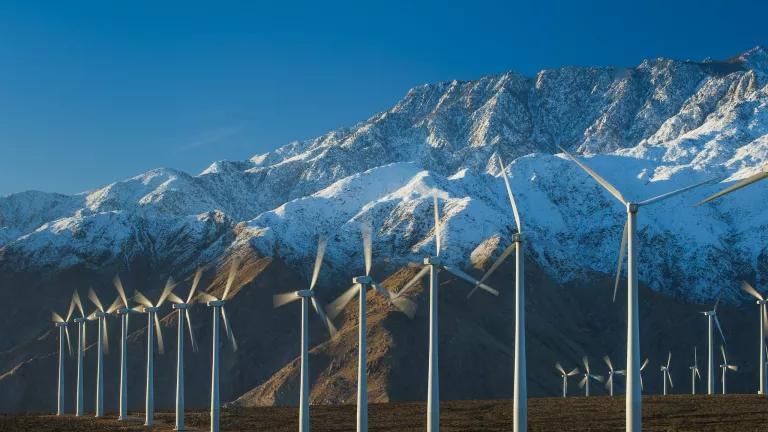Public Lands Rule Aims to Increase Focus on Conservation
The Bureau of Land Management announced a new proposal to modernize the agency’s strategies for managing public lands and to increase its focus on conservation, recreation, wildlife, water, and local economies.

Bodie Hills in California’s Eastern Sierra
Bureau of Land Management/Bob Wick, CC BY 2.0
Updated on 6/21/23 to include recommendations for improving the proposed Public Lands Rule.
The Bureau of Land Management has released a proposed Public Lands Rule to help it live up to its multiuse mission more fully by placing increased emphasis on the health and resilience of ecosystems across the lands it manages. To achieve this, the proposed rule prioritizes protecting intact landscapes, restoring critical lands and waters, and creating tools and processes to inform science-based management decisions. The proposed rule seeks to integrate the use of Traditional Ecological Knowledge to inform decision-making.

Snake River Area of Critical Environmental Concern in Idaho
Bureau of Land Management, CC BY 2.0
In proposing management changes, the Bureau of Land Management indirectly acknowledges what many have known for years—that the agency has placed its finger on the scale to advance oil and gas leasing, mining, and other extractive uses and neglected its congressionally mandated obligation to advance outcomes such as ensuring clean water, stewarding fish and wildlife habitat, and building ecosystem resilience. The agency indicates that its proposal is designed to put conservation outcomes on an equal footing with other uses. One way it proposes to do this is by amending existing regulations for designating Areas of Critical Environmental Concern to better ensure the agency is meeting its obligation to protect important natural, cultural, and scenic resources. The proposed rule also includes steps to accelerate restoration of degraded public lands and waters.
Public lands are the heart of the West
From the Arctic Coastal Plain to the Sonoran Desert National Monument of the Southwest, the agency manages some of the West’s most beloved lands and waters. The Bureau of Land Management is the largest manager of public lands—stewarding 245 million acres of rolling sagebrush hills, deserts, grasslands, and many other lands valuable for wildlife, recreation, and tourism. Millions of people depend on the waters that flow through and originate on these lands for clean drinking water supplies. In addition, public land assets are an essential part of the solution for increasing resilience to climate change by reducing hazards from droughts, wildfires, and flooding.
As the world faces staggering nature loss, these lands serve as vital connective tissue, providing wildlife corridors between the big wilderness areas and national parks and refuges and the smaller private, county, and state lands. Public lands are home to more than 3,000 species, including migrating ungulates, songbirds, and waterfowl. And, we cannot forget that outdoor recreation on public lands is a significant economic driver in the United States, generating $689 billion annually in consumer spending and supporting 4.3 million jobs.

Pacific Crest National Scenic Trail in California
Bureau of Land Management/Bob Wick, CC BY 2.0
The Bureau of Land Management’s stewardship is out of balance
Given the value of these resources, the Bureau of Land Management finds itself out of step with the needs of the American public. For nearly 40 years, the agency has focused on resource extraction and other multiple uses to the detriment of healthy fish and wildlife, fragile watersheds, and cultural resource protection. For example, the agency currently allows oil and gas leasing on 90 percent of the lands Congress has charged it with stewarding.
With rapid changes occurring in the West due to biodiversity loss, drought, wildfire, and other climate-related impacts to communities—as well as numerous development pressures—this proposed rule acknowledges the need for the agency to bring balance to its mission and increase the health and resilience of public lands and waters for current and future generations.
Western voters support conservation outcomes
This proposed rule pushes the Bureau of Land Management further toward meeting the desires and expectations of voters in the western regions. A poll released in February, which surveyed voters in the Mountain states—Arizona, Colorado, Idaho, Montana, Nevada, New Mexico, Utah, and Wyoming—found that the majority (70 to 90 percent) support conservation goals like protecting wildlife habitats and migration routes, ensuring healthier forests, and safeguarding drinking water. Almost 9 in 10 voters (86 percent) say protecting our drinking water sources is very important. More than 9 in 10 voters across every one of these states say protecting wildlife habitat and migration routes are important goals, while a similar percentage (91 percent) of voters regard helping threatened wildlife as being important.

Sandhill crane on public lands in Wyoming
Bureau of Land Management, CC BY 2.0
Setting the course for a better future for our public lands
As the environment around us changes, it is time for the Bureau of Land Management to contribute more toward protecting intact landscapes, restoring degraded lands and waters, and building ecosystem health to increase resilience to climate change. These actions also help in countering biodiversity loss.
The agency’s draft rulemaking is a step in the right direction, but it needs to go further to achieve the full potential of the lands it manages. NRDC has encouraged the agency to improve the final rule in the following ways:
- Require the agency to consult with tribes to advance opportunities for co-stewardship, incorporate Indigenous Knowledge, respect tribal sovereignty and treaty rights, protect tribal cultural sites, and carry out tribal consultation in ways that honor the unique historic and current connections of Indigenous peoples to public lands.
- Prior to approving any development action, require the agency to conduct an inventory of intact natural landscapes and habitat connectivity areas and ensure that the action will not foreseeably degrade any such lands and waters.
- Ensure that all eligible areas that meet Areas of Critical Environmental Concern criteria are designated as such and managed to protect the values for which they were designated.
- Ensure the agency’s management promotes recovery of listed and at-risk species.
- Create robust regulatory mechanisms to protect older and mature forests from logging.
While the Bureau of Land Management is finalizing the Public Lands Rule, it is also revising two rulemakings that will govern future renewable energy development on lands it manages—the 2016 leasing rule and the Western Solar Plan. These three rulemakings should be developed and implemented in coordination to achieve natural resource conservation while also delivering responsibly sited renewable energy.




